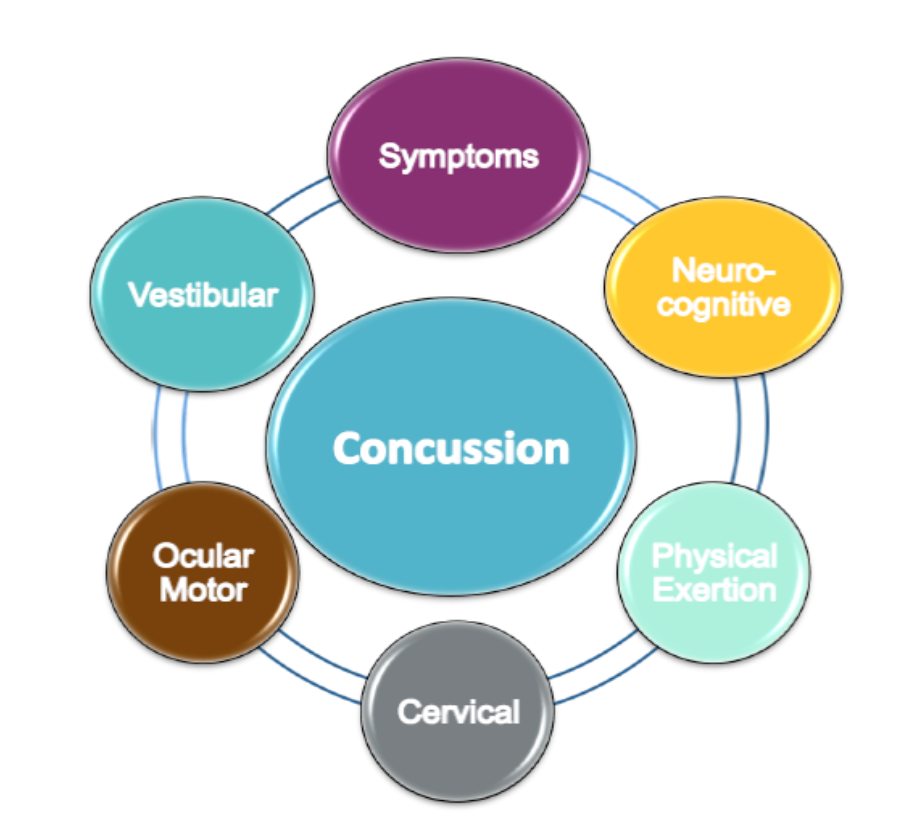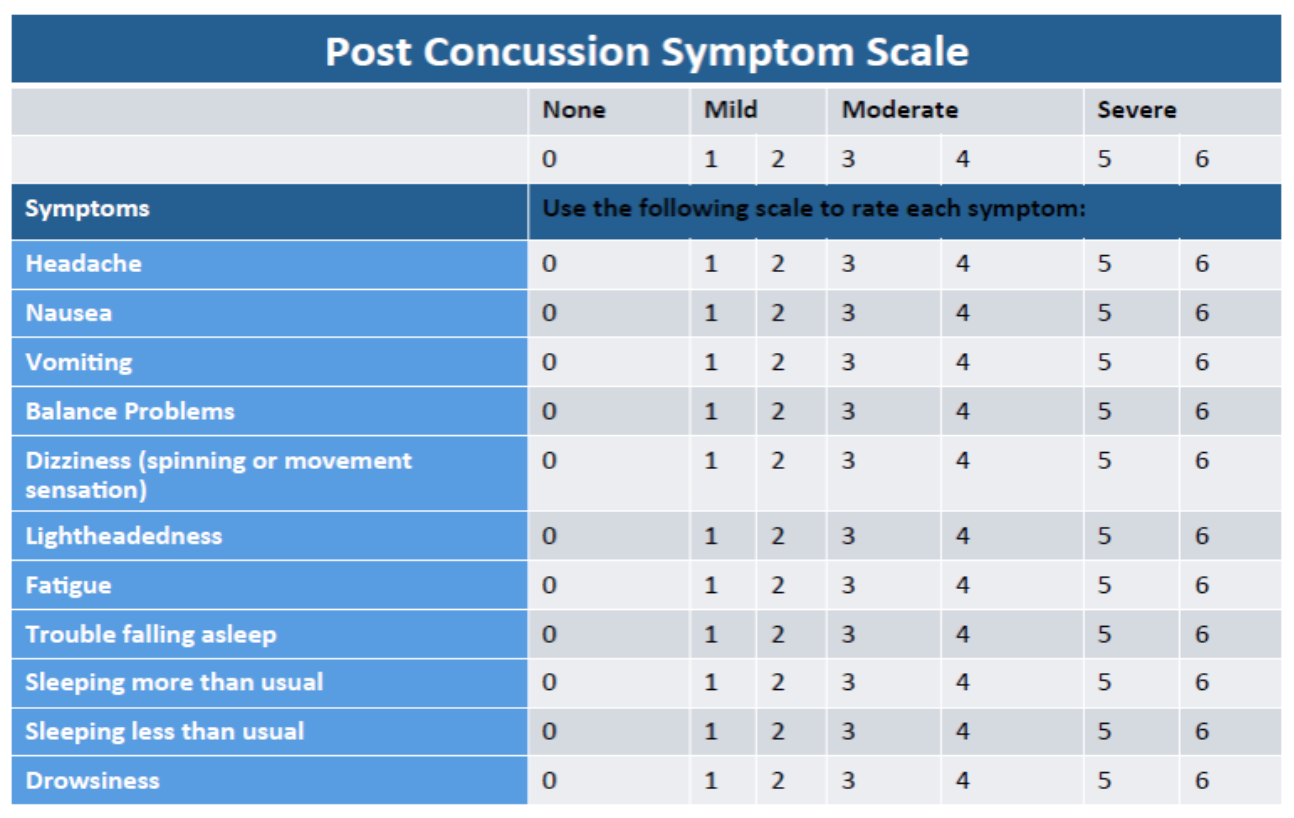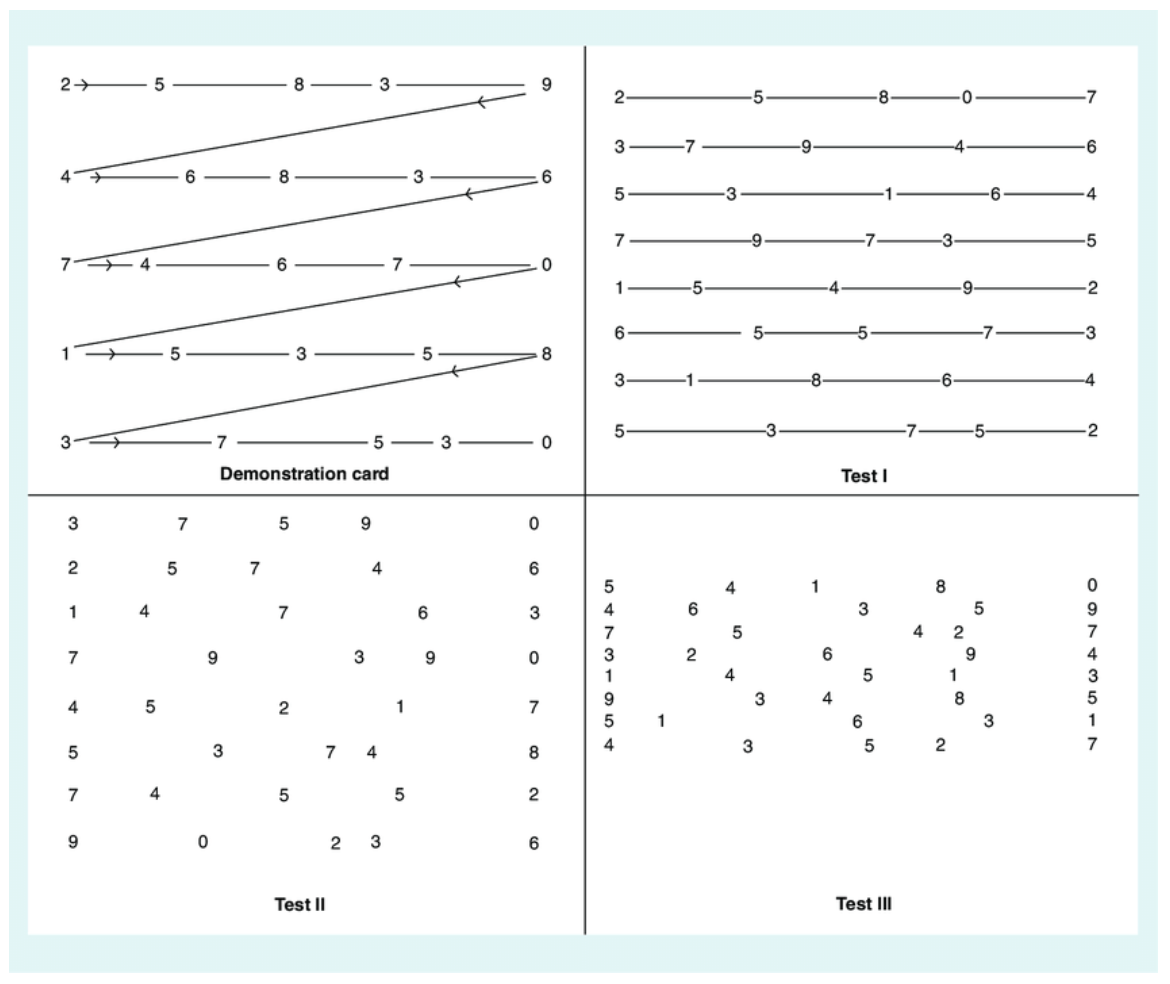Patient and symptom-specific testing is crucial for identifying the subtypes of concussion presentations that may be present and determining the best treatment strategies. Here are some tests that are commonly used to categorize concussion.
Symptom Assessment
Examination begins with patient-reported symptoms utilizing a standardized, self-report symptom scale (pictured), which is vital for understanding and tracking symptoms following a concussion!
Neuro-cognitive testing
Neuro-cognitive testing using tests, such as the King Devick Test (pictured), are vital for assessing visual performance, concentration, and memory.
Physiologic testing
Physiologic testing using the Buffalo Treadmill Test protocol, which is a standardized and progressive treadmill walking test is implemented for concussions to determine the impact of physical exertion on symptoms.
Cervical spine testing
Cervical spine testing that assesses posture, range of motion, muscle flexibility, joint mobility, and palpation for tenderness is used to determine if the neck is contributing to concussion symptoms that may include neck pain, dizziness, visual disturbances, and headache.
Vestibular-ocular testing
Vestibular and visual testing assess the status of the vestibular (inner ear) and the visual systems that are vital for visual tracking and focus and maintaining balance, which are often impacted after a concussion, resulting in difficulty reading, blurry vision, dizziness, and loss of balance.




